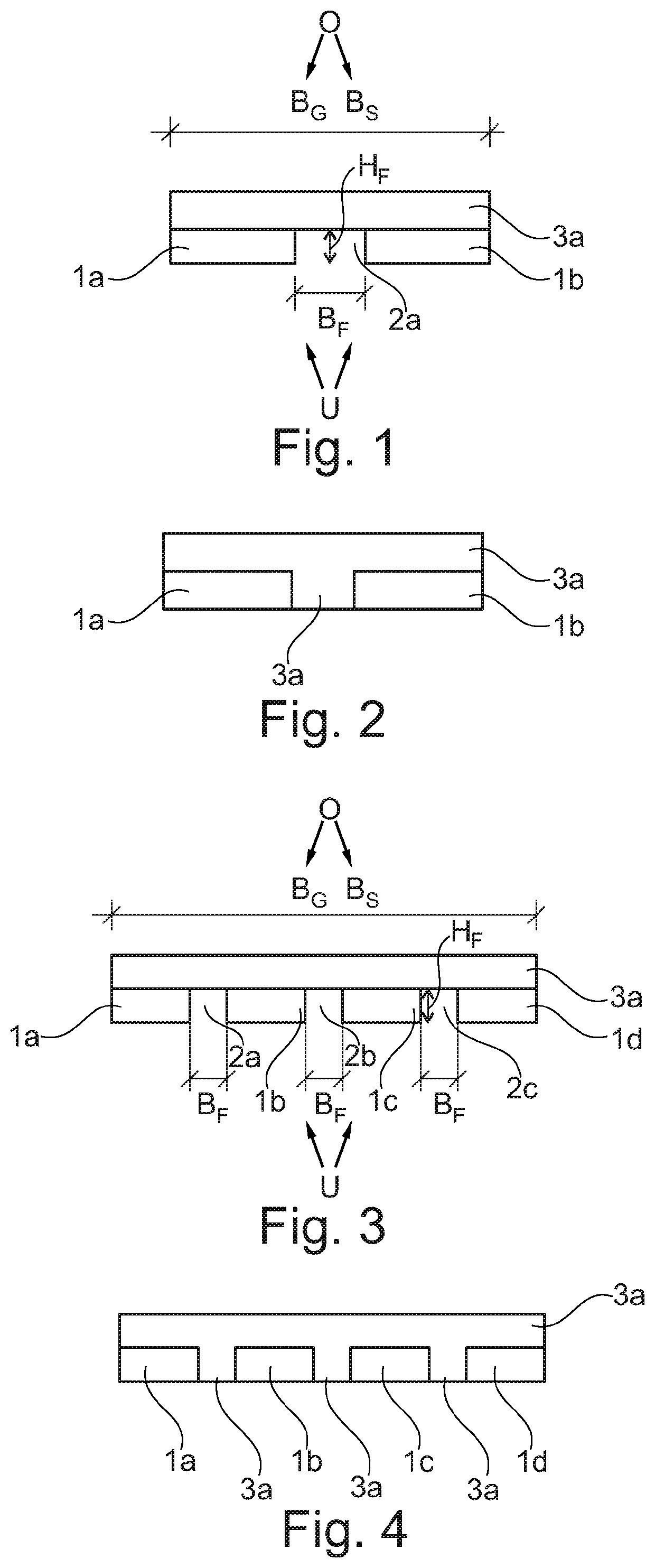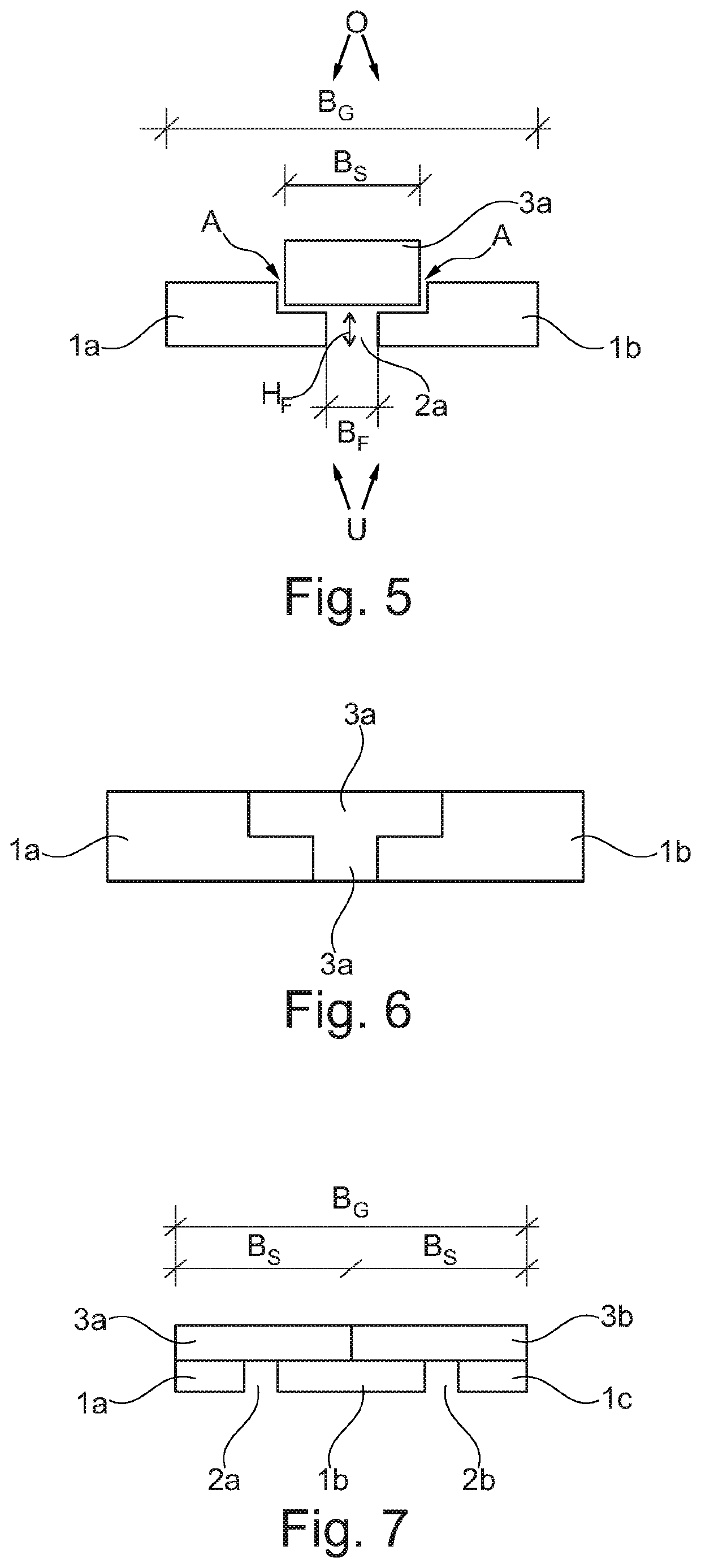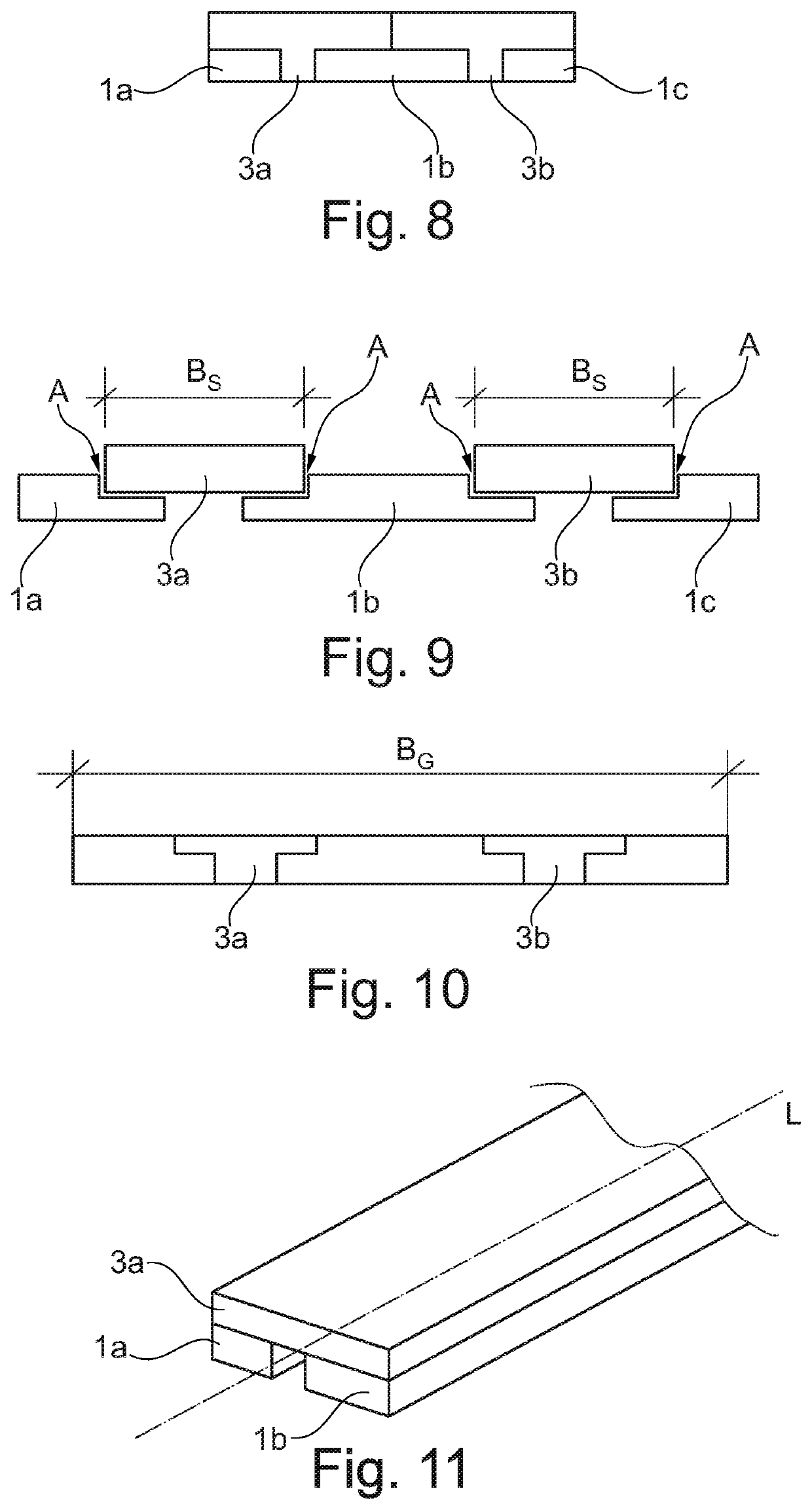Method for producing a composite material, and composite material
a composite material and method technology, applied in the field of producing composite materials, can solve the problems of not being able to produce, or only at enormous cost, according to traditional methods, and achieve the effect of reducing the cost of production
- Summary
- Abstract
- Description
- Claims
- Application Information
AI Technical Summary
Benefits of technology
Problems solved by technology
Method used
Image
Examples
Embodiment Construction
[0046]The proportions in the figures do not necessarily correspond to the real proportions, but serve substantially for illustrative purposes.
[0047]The following reference symbols are used in the figures:[0048]L longitudinal axis[0049]BG total width[0050]BF width of the filling channel[0051]HF height of the filling channel[0052]BS width of the filler strip[0053]A recess[0054]top side[0055]U bottom side[0056]1a (first) strip[0057]1b (second) strip[0058]1c (third) strip[0059]1d (fourth) strip[0060]2a filling channel[0061]2b (second) filling channel[0062]2c (third) filling channel[0063]3a filler strip[0064]3b (second) filler strip
[0065]In the method proposed according to the invention, a band arrangement is fed to a roll plating device (not represented) or to the inlet of a roll plating device and leaves the roll plating device or the outlet as a plated composite material. A preferred plating method for the present invention is constituted by the roll plating. In principle, other plati...
PUM
| Property | Measurement | Unit |
|---|---|---|
| tensile strength | aaaaa | aaaaa |
| tensile strength | aaaaa | aaaaa |
| tensile strength | aaaaa | aaaaa |
Abstract
Description
Claims
Application Information
 Login to View More
Login to View More - R&D
- Intellectual Property
- Life Sciences
- Materials
- Tech Scout
- Unparalleled Data Quality
- Higher Quality Content
- 60% Fewer Hallucinations
Browse by: Latest US Patents, China's latest patents, Technical Efficacy Thesaurus, Application Domain, Technology Topic, Popular Technical Reports.
© 2025 PatSnap. All rights reserved.Legal|Privacy policy|Modern Slavery Act Transparency Statement|Sitemap|About US| Contact US: help@patsnap.com



